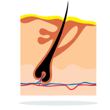Notice (8): Undefined index: geoplugin_countryCode [APP/Controller/AppController.php, line 94]Code Context$Country_code = '';if($ip_data && $ip_data['geoplugin_countryCode'] != null) {$Country_code = $ip_data['geoplugin_countryCode'];$client = null $forward = null $remote = '216.73.216.24' $ip = '216.73.216.24' $ch = unknown $ip_data_in = '{ "geoplugin_status":429, "geoplugin_message": "Blacklisted due to sending too many requests to geoplugin.net. Consider whitelisting your IP or domain", "geoplugin_url": "https://www.geoplugin.com/premium/" } ' $ip_data = [ 'geoplugin_status' => '429', 'geoplugin_message' => 'Blacklisted due to sending too many requests to geoplugin.net. Consider whitelisting your IP or domain', 'geoplugin_url' => 'https://www.geoplugin.com/premium/' ] $Country_code = ''App\Controller\AppController::initialize() - APP/Controller/AppController.php, line 94 App\Controller\ProductsController::initialize() - APP/Controller/ProductsController.php, line 31 Cake\Controller\Controller::__construct() - CORE/src/Controller/Controller.php, line 273 ReflectionClass::newInstance() - [internal], line ?? Cake\Http\ControllerFactory::create() - CORE/src/Http/ControllerFactory.php, line 47 Cake\Http\ActionDispatcher::dispatch() - CORE/src/Http/ActionDispatcher.php, line 91 Cake\Http\BaseApplication::__invoke() - CORE/src/Http/BaseApplication.php, line 235 Cake\Http\Runner::__invoke() - CORE/src/Http/Runner.php, line 65 Cake\Http\Runner::__invoke() - CORE/src/Http/Runner.php, line 65 Cake\Http\Middleware\CsrfProtectionMiddleware::__invoke() - CORE/src/Http/Middleware/CsrfProtectionMiddleware.php, line 104 Cake\Http\Runner::__invoke() - CORE/src/Http/Runner.php, line 65 Cake\Http\Runner::run() - CORE/src/Http/Runner.php, line 51 Cake\Routing\Middleware\RoutingMiddleware::__invoke() - CORE/src/Routing/Middleware/RoutingMiddleware.php, line 168 Cake\Http\Runner::__invoke() - CORE/src/Http/Runner.php, line 65 Cake\Routing\Middleware\AssetMiddleware::__invoke() - CORE/src/Routing/Middleware/AssetMiddleware.php, line 88 Cake\Http\Runner::__invoke() - CORE/src/Http/Runner.php, line 65 Cake\Error\Middleware\ErrorHandlerMiddleware::__invoke() - CORE/src/Error/Middleware/ErrorHandlerMiddleware.php, line 96
| Action: | Astringent |
|---|---|
| Synonym: | n/a |
Contracts and thickens tissues to decrease permeability and increase resistance to physical stress.
• wound healing: lacerations, bruises
• ulcers
• weeping eczema
• inflamed skin (Dermatitis)
• varicose veins
• diarrhea
• agrimony (Agrimonia eupatoria)
• bayberry (Myrica cerifera)
• bearberry (Arctostaphylos uva-ursi)
• bilberry (Vaccinium myrtillus)
• black walnut (Juglans nigra)
• butcher's broom (Ruscus aculeatus)
• cedar (Thuja occidentalis)
• cinnamon (Cinnamomum cassia)
• cranberry (Vaccinium macrocarpon)
• cranesbill (Geranium maculatum)
• elderberry (Sambucus canadensis)
• horsetail (Equisetum arvense)
• lady's mantle (Alchemilla vulgaris)
• myrrh (Commiphora myrrh)
• new jersey tea (Ceanothus Americanus)
• oak (Quercus robur)
• partridge berry (Mitchella repens)
• pau d'arco (Tabebuia avellanedae)
• pipsissewa (Chimaphila umbellate)
• pygeum (Pygeum africanum)
• raspberry (Rubus idaeus)
• sage (Salvia officinalis)
• schisandra (Schisandra chinensis)
• shepherd's purse (Capsella bursa-pastoris)
• trillium (Trillium pendulatum)
• witch hazel (Hamamelis virginiana)
• yarrow (Achillea millefolium )
• skin
• gastrointestinal
Mechanism of Action:
• “tans” the mucous membranes making them less permeable
• destroys certain protein based toxins form micro-organisms
Hoffman D. Medical Herbalism. Rochester, Vermont: Healing Arts Press, 2003.
Barnes J, Anderson LA, Phillipson JD. Herbal Medicines, 3rd ed. London: Pharmaceutical Press, 2007.
Bone K. Principles and Practice of Phytotherapy. Edinburgh: Churchill Livingstone, 2000.
Bone K. A Clinical Guide to Blending Liquid Herbs: Herbal Formulations for the Individual Patient. St Louis, MO: Churchill Livingstone, 2003.
Disclaimer: This content is subject to change. The information is intended to inform and educate; it does not replace the medical evaluation, advice, diagnosis or treatment by a healthcare professional. www.nhpassist.com © 2014 NDAssist Inc. and/or its affiliates. All rights reserved.

|
Astringent
DefinitionContracts and thickens tissues to decrease permeability and increase resistance to physical stress. Indications• wound healing: lacerations, bruises Treatments• agrimony (Agrimonia eupatoria) Systems• skin MechanismMechanism of Action: ReferencesHoffman D. Medical Herbalism. Rochester, Vermont: Healing Arts Press, 2003. |
|---|